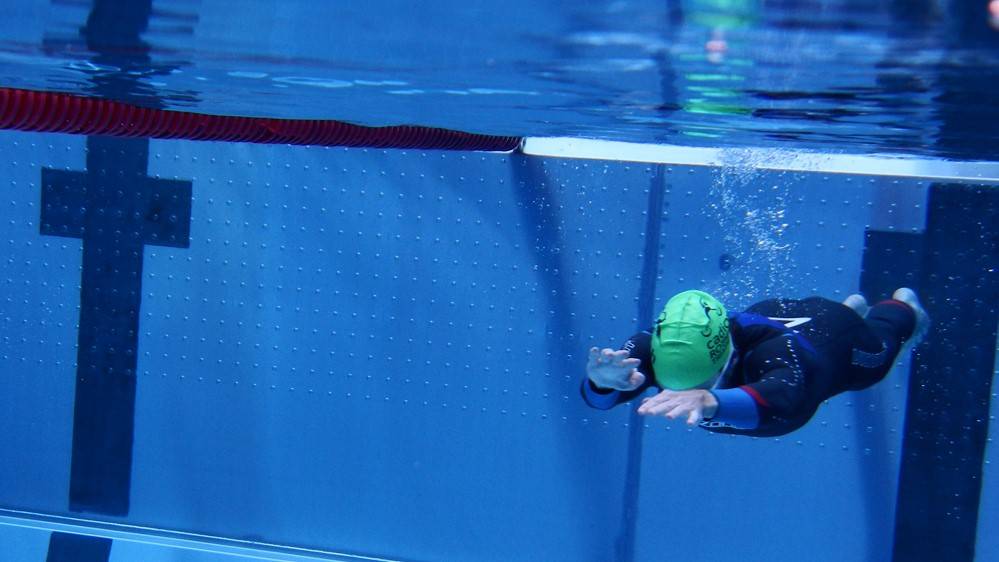All beginnings are difficult? Not even close! Today we're going back to the very first steps in swimming and taking the children as an example. They usually master the swimming basics of floating, sinking and gliding without any problems! You can find out how to learn it here.
When children learn to swim, they start floating. The experience that the water carries the body is always impressive. If you observe a child in the swimming pool, experiencing its first units in the water, you will notice that floating in the water can't be that difficult. If you ask adult triathletes, however, you often get a different impression.
Master the basics = feel comfortable in the water
While triathletes can swim 3.8 kilometers (we won't talk about time here), they often don't feel comfortable in the water. Dealing with the fundamentals of swimming is therefore sensible and important. Because if you can do the basics, like floating, you're not afraid of going under.
Go back to Go!
So we'll start at the very beginning to help you feel better in the water at the end. You can incorporate a few simple exercises into any swim workout.
Pushing off the wall and consciously gliding as long as the momentum lasts is very simple. Here you can quickly see how far you have come. Questions such as "Am I fast?", "Will I appear again immediately?" also need to be clarified.
With every lane that you swim, you can consciously practice gliding and pushing off. The better you can glide, the more economically you can swim.
A nice exercise is also "Toter Mann", which is performed on the back. You stretch your arms above your head and lie flat on the water. You “simply” drift along in a very relaxed manner. Important: Lay your head on the water surface, relax and you'll soon notice that you don't have to make any effort to float.
In descent
Sinking is also an important point in swimming. Sure, with a wetsuit it's no problem and you float so nicely on the water surface. However, if you really feel comfortable in the water, you not only have to be able to float, you also have to be able to sink.
For example: Sit on the floor and stay there for three seconds. A nice exercise where hovering and sinking is important is old German swimming. That's how you used to swim backstroke. Lie on your back, do a sternum kick, and pull your arms back at the same time. (Caution, always breathe out through your nose). This swim position is relaxing and good for the water feeling at the same time.
Anyone who has the opportunity to observe a group of young competitive swimmers during training will find that the swim seems effortless and is still extremely fast. When the dear little ones (who often swim faster than we do at the age of twelve) want to relax, then they enjoy swimming old German.
training goals
Goal One: Practice pushing off and gliding in the water.
Goal Two: Practice versatility, sink to the bottom, do dolphin jumps
Goal three: Practice hovering on the water surface and under water
Our tip
Especially when swimming breaststroke, after a powerful arm stroke and leg kick, you can let your body lie nicely on the water and enjoy gliding. You can also put your head down on the water surface and enjoy gliding with the Altdeutsch backstroke.
If you have children, you shouldn't miss the opportunity to romp around in the water with your little ones.




















